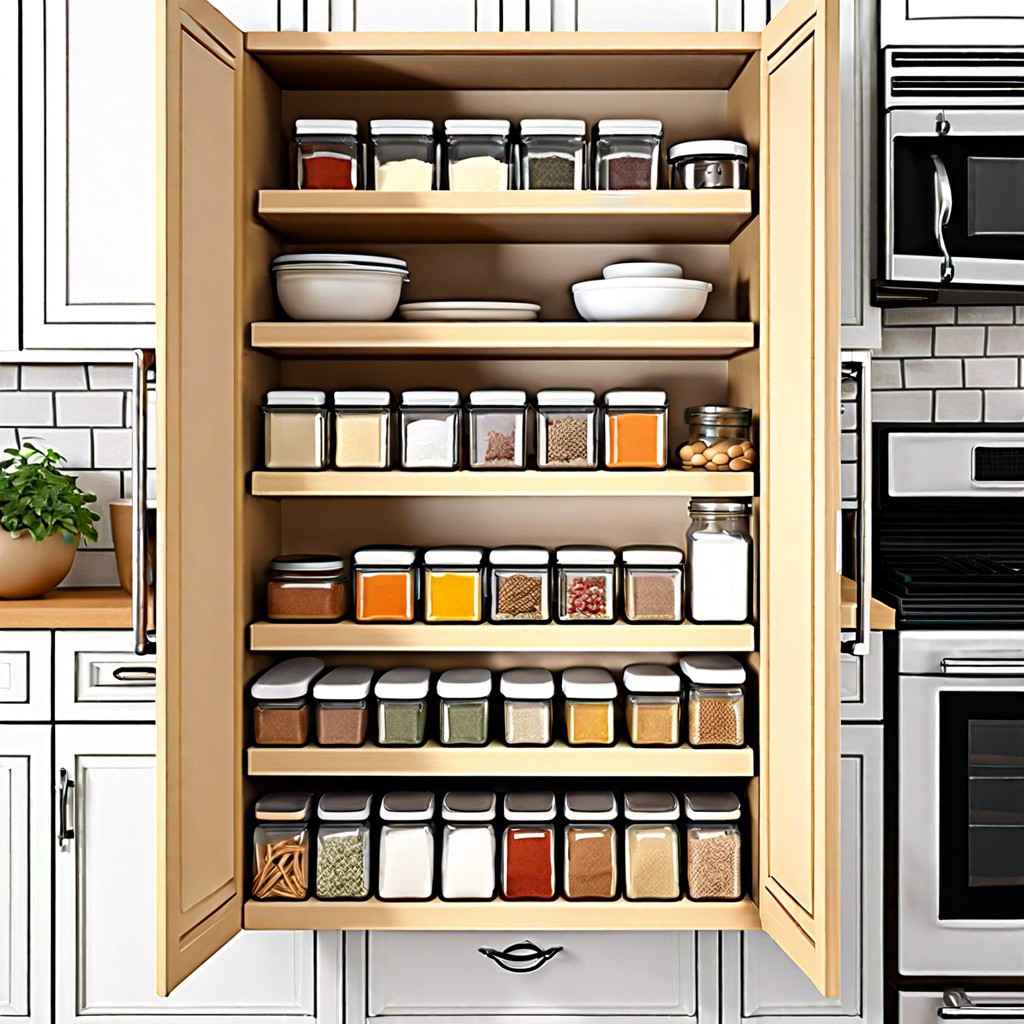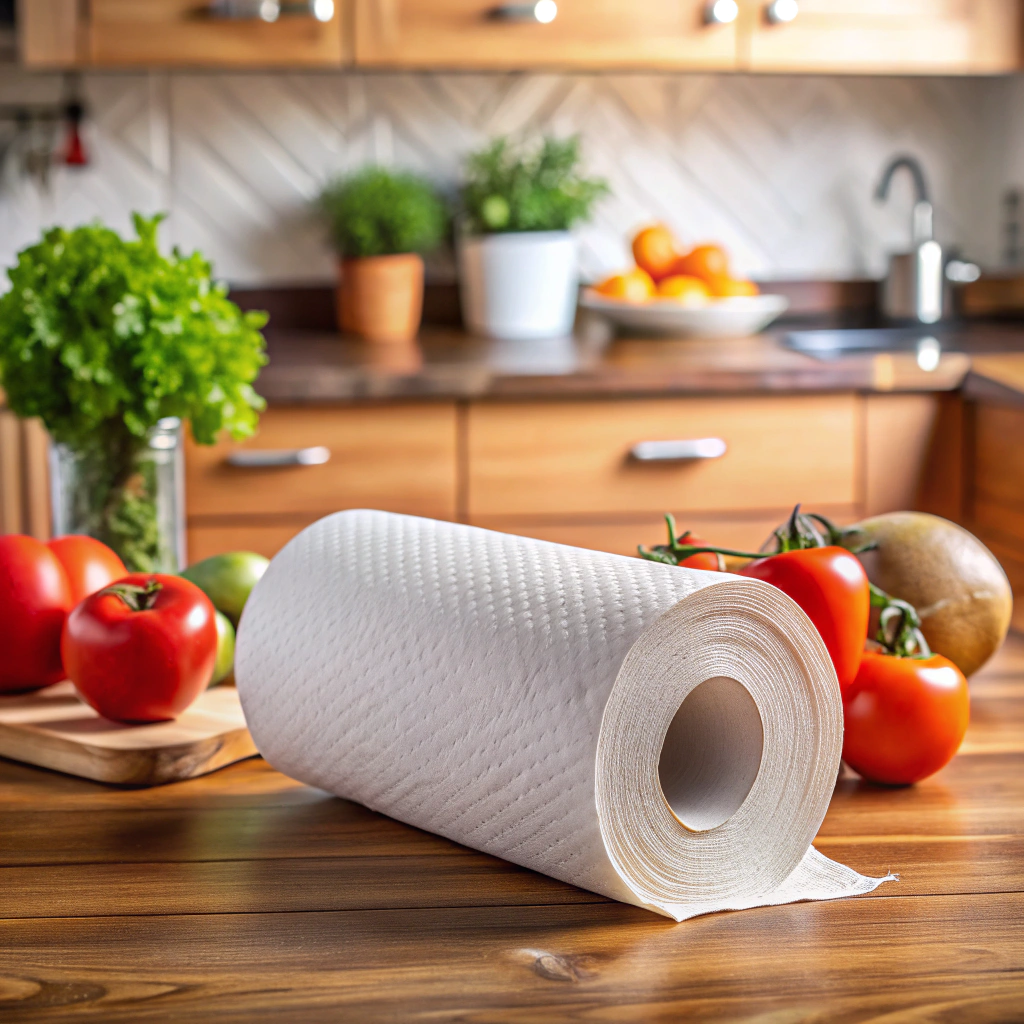Last updated on
Learn how to declutter and arrange your kitchen cabinets for easy access to your food items.
Key takeaways:
- Declutter and get rid of expired and unused items.
- Organize your kitchen cabinets by zones for easy access.
- Make use of awkward spaces for storage.
- Arrange food items by visibility and freshness.
- Group similar items together for easy organization and meal inspiration.
What's Inside
Declutter, Declutter, Declutter!

Embarking on the journey of tidying your kitchen cabinets, the first step is to sift through your provisions. Start by hauling everything out onto the counter. This move allows you to take stock of what you have, what’s past its prime, and what’s just taking up valuable real estate without a purpose.
Now, channel your inner detective and scrutinize expiry dates; you’ll likely find a few items that should have hit the trash a long time ago. Next, face the truth about those fancy artisanal sauces and exotic spices. If they haven’t flavored your meals in over a year, it’s a safe bet you won’t be reaching for them anytime soon. It’s time for them to go.
Consider your real eating habits. If quinoa’s been collecting dust while pasta’s always running out, adjust your storage space accordingly. Be brutal with duplicates too; consolidate half-filled packages, and you’ll be surprised at the newfound space. And remember, the purpose here isn’t to create a void but to make room for what serves you best.
Organize By Zones
Creating distinct areas within your kitchen cabinets can turn a chaotic jumble into a chef’s haven. Think of your kitchen like a library and your ingredients and utensils as the books. You wouldn’t mix cookbooks with novels, would you?
Start with a baking zone. This is where you’ll corral all things related to making those irresistible treats – flour, baking soda, mixing bowls, and measuring cups.
Next, carve out a space for cooking essentials. Spices, oils, and sauces sit here, so they’re within arm’s reach when the stovetop action begins.
Don’t overlook a snack station. Kids and adults alike can grab a quick bite without rummaging through every shelf.
Lastly, consider a coffee or tea corner. Mugs, sugar, and your coffee maker can cozy up together for those morning or late-night rushes.
By assigning these zones, you’ll streamline your meal prep and maintain an orderly kitchen with ease.
Use Those Awkward Spaces
Every kitchen boasts its share of nooks and crannies that seem too narrow, high, or inconvenient for everyday use. But with a dash of creativity, these can become your secret storage spots. Slide in vertical dividers to transform a slender cabinet into a haven for baking trays and cutting boards.
Consider the gap between the fridge and the wall perfect for a slide-out spice rack. Over-the-cabinet hooks and under-shelf baskets make use of the often-wasted vertical space, giving your wraps and bags a home that’s both out of sight and easy to reach.
Top shelves may require a step stool to access, but they’re just the ticket for lesser-used gadgets or bulk buys. Remember, when spot-on organization meets a pinch of innovation, even the trickiest angles of your kitchen can turn into organizational gold mines.
Food Cabinet Organization
Imagine a symphony of cans, boxes, and bags playing harmoniously together. That’s your goal when arranging your food stores. Starting with the tallest in the back, arrange cans and jars so that each label is easily visible at a glance. Think of it like a culinary stadium seating arrangement—every player has a clear view.
Transparent containers are game-changers; they let you spot your pasta, rice, and cereals without a treasure hunt. Invest in a few and transfer bulk or bagged items into them. Not only does it make locating your grains a breeze, but it also keeps them fresh longer—no more stale cereal surprises!
Keep the munchies in motion by practicing the “first in, first out” rule. Keep newer items at the back so older ones aren’t forgotten, reducing food waste. It simplifies deciding what’s for dinner when you can easily see what needs to be used up.
Lastly, dedicate a section for those go-to snacks. Whether it’s for the kids after school or your midday nibble, keeping these within reach prevents the all-too-familiar rummaging that upends your newly tidied space. And for the love of snack time, avoid stacking—that’s a rookie move that invites chaos. Keep it single-layer, and watch your kitchen harmony flourish.
Group Similar Items Together
Start with the spices; these petite flavor powerhouses thrive when corralled together. Whether it’s in a small basket or on a lazy Susan, your future self will thank you for putting thyme and effort into this step.
Next, tackle your non-perishables. Boxed goods like pasta and rice stack splendidly, while cans of soup and vegetables are happy to be racked up together. Think of them as edible building blocks—if they were on a dating app, their profiles would definitely say they’re looking for a shelf mate.
Don’t overlook grouping sauces and oils either. Since these items often share the same culinary dance, keep them within arm’s reach of each other. It’ll be like a mini cooking show in your pantry every time you whip up a meal.
Dry goods like beans and lentils? They’re the quiet ones that are happy with a simple container. Visual harmony is as pleasing as their nutritional value. And let’s face it, seeing your foods in clear, labeled containers is oddly satisfying.
Let’s not forget the snacks. Corralling them together makes it a no-brainer when hunger strikes. Plus, it’s easier to monitor when those sneaky late-night cravings have been raiding the cookie stash.
This method follows a simple logic: keep like with like. It’s visual sorting that streamlines your culinary searches and leads to some rather serendipitous meal inspirations. After all, that dried mango didn’t accidentally end up beside the cashews, it’s a snack-made-in-heaven waiting to happen.




